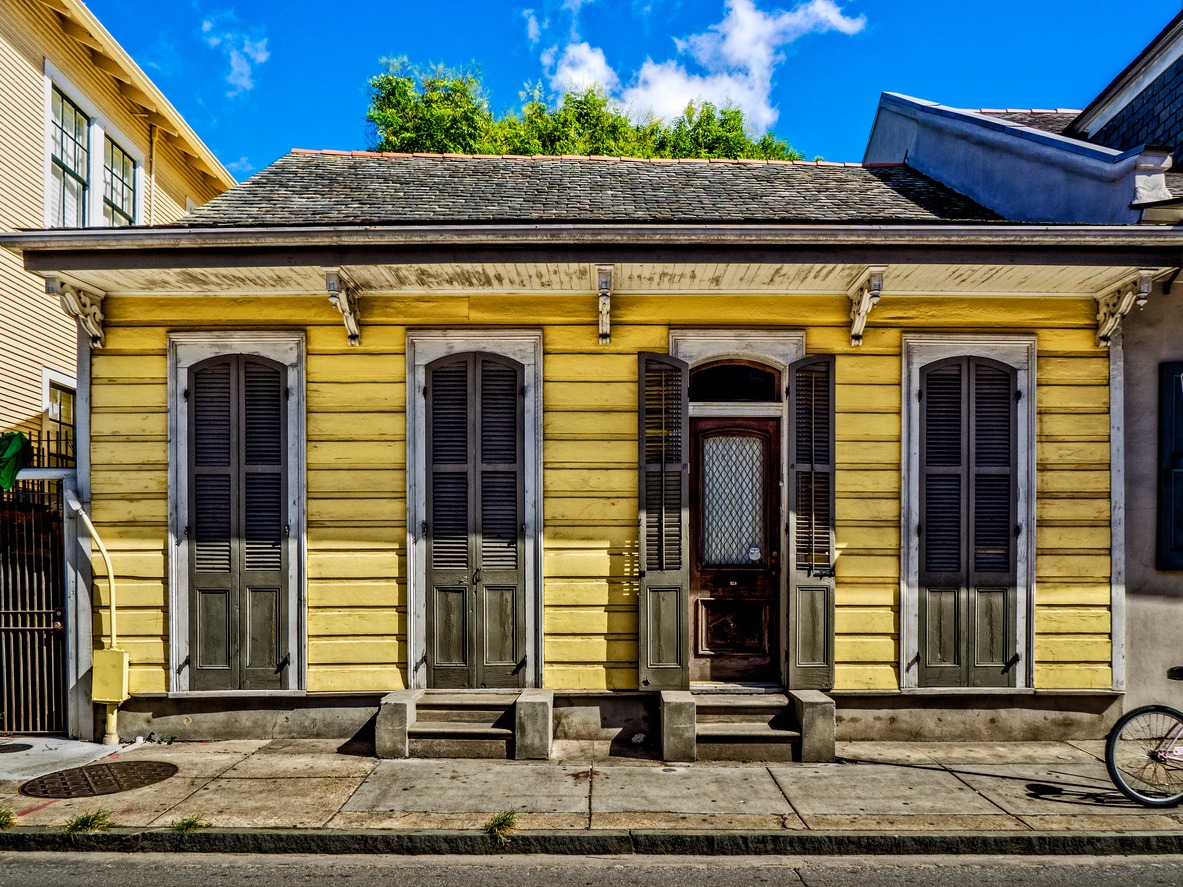The shotgun house in Tupelo, Mississippi in which Elvis Presley was born
Shotgun houses are a distinct and historically significant architectural form that originated in the United States. Characterized by their long, narrow layout, these houses are typically no wider than twelve feet and consist of rooms arranged directly behind each other. This design allows for each room to be accessed from a single, straight passage running from the front to the back of the house. The name “shotgun house” is thought to reflect the idea that if all the doors were open, a shotgun blast could travel unobstructed from the front directly to the back.
The architectural history of the shotgun house is a subject of debate, but it is commonly associated with the African American communities of New Orleans and other parts of the southern United States. Its origins are unclear, although it is believed to have proliferated in New Orleans in the early 19th century. Scholars have posited a connection between the shotgun house and the Creole and Haitian influences in New Orleans, especially following the influx of refugees from the Haitian Revolution. This design is considered a response to the urban constraints of narrow plots, providing a modest yet efficient solution for residential structures.
Shotgun houses have left a lasting imprint on the urban fabric of America’s southern cities. They represent a blend of cultural influences and an architectural strategy for close-quarters living, embracing both form and function. While their popularity has fluctuated over time, these houses continue to be valued for their cultural and historical significance, and efforts have been made to preserve them in various communities.
Historical Context and Evolution
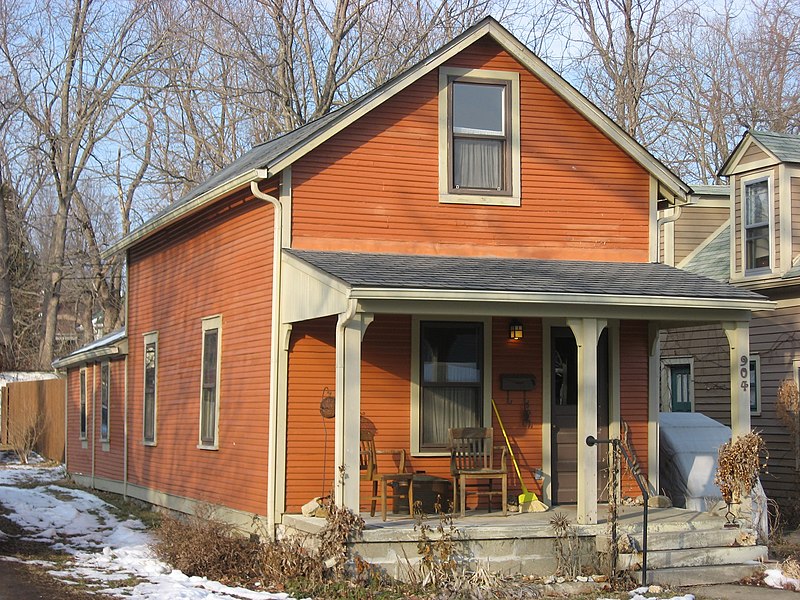
The architectural history of shotgun houses reveals a blend of African and Caribbean influences, with their design adapted over the 19th century and distribution aided by migration within the United States. The evolution of this house style is a testament to the cultural interplay and practical needs of the communities that inhabited them.
African and Caribbean Roots
Shotgun houses can trace their lineage back to West Africa and Haiti, where the design emerged out of both diasporic cultural memory and necessity. It’s believed these narrow-front homes were introduced to the Americas through the transatlantic slave trade, with their straightforward design mirroring certain African dwellings. In Haiti, similar structures arose, and after the Haitian Revolution, both the people and their architectural practices influenced house designs in places like New Orleans, solidifying the shotgun house’s association with African American communities.
19th Century Development
The transformation of shotgun houses in the 19th century was marked by their simplicity and efficiency in design, which met the demands for affordable housing during urbanization. As they became a common sight in African American neighborhoods, particularly in the southern United States, the term ‘shotgun house’ became synonymous with these long, narrow homes. They generally consisted of three to five rooms aligned in a straight row, allowing for natural ventilation and ease of construction, which was essential for the growing, densely-packed cities.
Migration and Distribution
The geographical spread of shotgun houses followed the migration patterns of African Americans, who moved within the southern states and beyond during the Great Migration. Shotgun houses thus appeared from New Orleans to cities as far as Chicago. This distribution demonstrates the adaptability of the architectural form to different climates and urban layouts. Despite regional variations, the defining characteristics of the shotgun house remained, such as the alignment of doors, enabling a straight line from front to back – a functional response to the communal lifestyle and environmental conditions of the residents.
Design Principles and Characteristics
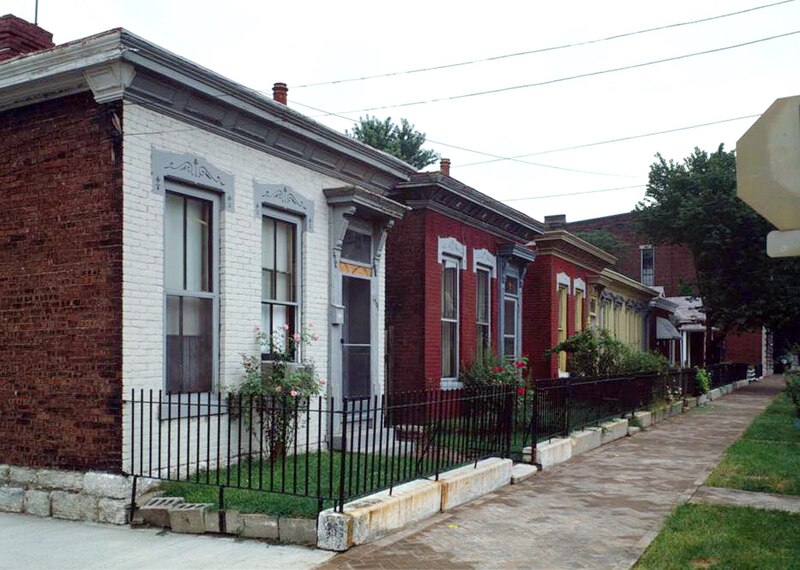
The shotgun house exhibits distinct architectural traits that make its structure instantly recognizable. These houses, typically narrow in form, are noted for their optimization of space and characteristic layout.
Defining Features
The shotgun house is defined by its long, narrow structure that typically spans no more than 12 feet in width. A significant feature of this style is the gabled front porch, which introduces the linear arrangement of rooms. Architecturally, the rooms are arranged directly behind one another with each room opening into the next. This unique layout facilitates a breeze to flow from front to back, which is climatically advantageous in warmer regions.
Structural Variations
While the classic shotgun house follows a straight-line configuration, several structural variations exist. The camelback shotgun house includes a partial second story at the rear, effectively adding more space in a modest footprint. Other variations see multiple bays or additional side halls, but all maintain the characteristic linear progression of living spaces.
Cultural Significance
Shotgun houses hold a place in the architectural history where style and utility merge. Often painted in bright colors, these houses carry a sense of cultural significance, especially within the community context in the Southern United States. The architectural form is a testament to efficient design principles that accommodated urban growth during the period of their construction, reflecting the socioeconomic conditions of their time.
Geographical Spread and Adaptation

The shotgun house is an architectural form that represents significant historical, cultural, and spatial adaptations across various regions.
Southern United States
Shotgun houses first gained prominence in New Orleans, Louisiana, revealing Caribbean influences likely traceable to Haitian roots. Their simplicity catered to the functional needs of the region’s urban development during the 19th century. The design, consisting of rooms arranged in a straight line from front to back, allowed for effective ventilation in the hot and humid climate of the American South.
Urban and Rural Dynamics
In urban settings, shotgun houses were a practical solution to the limited space of densely populated areas where they were often constructed in close proximity, creating a distinctive streetscape. Conversely, in rural contexts, the same design proved flexible for expansion and adaptation, reflecting the shotgun house’s pragmatic utility across different environments within the Southern United States.
Expansion Beyond New Orleans
While the roots of the shotgun house are deeply planted in New Orleans, the architectural style expanded beyond Louisiana. Its footprint can be traced across the South, reaching as far as Florida and Texas, with isolated examples found in northern cities like Chicago. This spread illustrates the adaptability of shotgun houses to various cultural and geographic contexts beyond their origin in the Caribbean and New Orleans.
Architectural Analysis
In analyzing shotgun houses, one must consider their significance within vernacular architecture and their practical design focused on form and function. These structures reflect the resourcefulness of architectural style adapted by low-income, working-class communities.
Vernacular Architecture
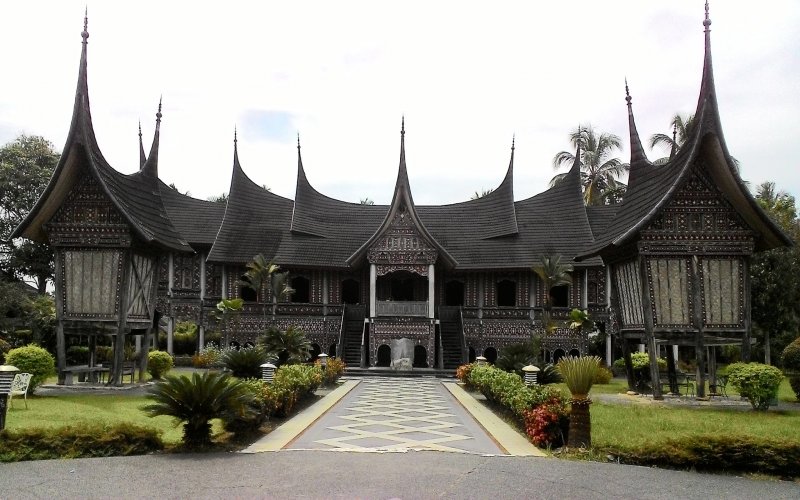
Vernacular architecture is defined by its use of local materials and knowledge, without dependence on professional architectural services. Shotgun houses exemplify this principle. They emerged primarily in the southern United States, tailored for urban lots where space was a premium. As a response to economic constraints and the need for efficient housing solutions, they are characterized by their simplicity and directness. A straight line layout facilitated construction and minimized material use, a critical aspect for the working-class populations that they predominantly served.
Shotgun House Form and Function
The shotgun house is a narrow rectangular dwelling, usually no wider than twelve feet, consisting of three or more rooms arranged in a straight line — doors aligned to allow a breeze to flow through from front to back. Here is an architectural breakdown of a typical shotgun house:
- Rooms: Commonly three; a living space, a middle bedroom, and a kitchen at the rear.
- Lot Size: Often situated on lots around thirty feet wide.
- Construction: Wood-frame, often with a front porch and gabled roof.
- Ventilation: Rooms aligned for cross-ventilation; windows placed opposite doors.
The form and function of shotgun houses are inherently intertwined. Their modest width and elongated form arose from the need to fit multiple units on narrow city lots, a response to both space and economic efficiency for low-income residents. The houses showcased a practical use of space while sometimes including ornamental details, like gingerbread trim, that added individual character without substantial expense.
Social and Economic Factors
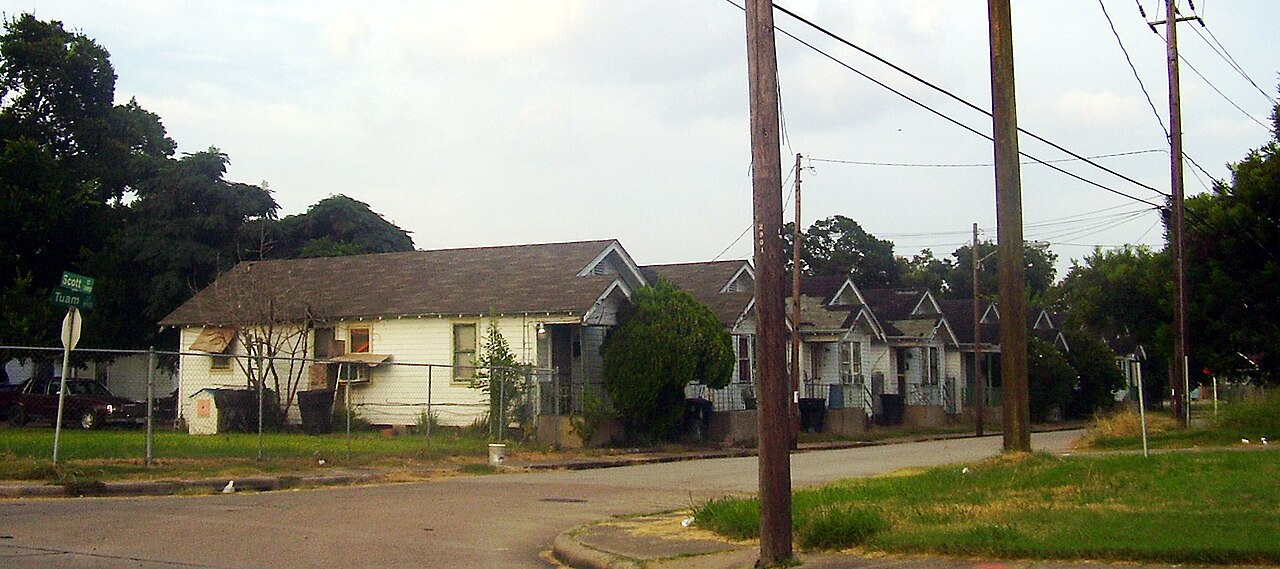
This section explores how socioeconomic elements influenced the development of shotgun houses, particularly how they addressed issues of affordability and the communal aspects of the design in alignment with the lifestyle of their inhabitants.
Affordability and Accessibility
Shotgun houses emerged as an inexpensive solution to urban housing challenges. They were particularly common in the 19th and early 20th centuries, a time when industrial growth led to increased urbanization and, in turn, a need for affordable housing options. The design simplicity and efficient use of space made these houses cost-effective to build, requiring fewer materials and less labor compared to other housing styles of the time.
- Materials: Utilized lower-cost lumber and hardware.
- Size: Typically narrow, which reduced land costs.
- Construction: Simple design expedited building process.
They often became rental properties, providing accessible accommodation for working-class families, who might otherwise struggle with poverty and housing insecurity. The ability to build these homes quickly and in great numbers made them a staple in growing urban landscapes.
Community and Lifestyle
The layout of shotgun houses promoted a sense of community and interconnection among residents. Their distinct linear arrangement – with rooms organized one behind the other – often meant less privacy, yet it fostered close-knit relationships and enabled communal living arrangements.
- Design: Rooms in direct sequence encouraged familial interaction.
- Neighbors: Proximity to other homes facilitated neighborly ties.
These houses usually contained two or three rooms that functioned as multipurpose spaces, with the possibility of serving as bedrooms or living areas as needed. While shotgun houses did offer a response to poverty by providing economical housing, they also reflected the social values and lifestyle of communities they housed, whom often valued close familial and community relationships.
Shotgun Houses in the Modern Era
In recent years, shotgun houses have garnered significant attention for their cultural and architectural importance, spearheading various historic preservation campaigns. These historical dwellings are now situated at the complex intersection of heritage conservation and contemporary urban development.
Historic Preservation Efforts
Historic preservationists have actively sought to protect shotgun houses, recognizing their contribution to the architectural tapestry of the southern United States. These efforts often converge in historic districts where shotgun houses are prevalent. Initiatives include restoring distinct features like the gingerbread trim, which adds decorative flair to these modest structures. In several instances, preservation ordinances have been instituted to maintain the character and historical integrity of neighborhoods rich in shotgun homes.
Moreover, the intrinsic value of these homes has been celebrated during urban renewal projects that aim to both preserve the past and meet current urban living standards. Historic tax credits and grants from preservation societies have become vital tools in ensuring that shotgun houses are not only preserved but also adapted for modern use.
Contemporary Relevance and Challenges
Shotgun houses face an array of challenges today, from gentrification to structural dilapidation, which threatens their existence. However, their enduring design continues to influence modern architectural practices, as seen in the development of minimalist and space-efficient housing. They continue to be an affordable option due to their modest size and efficient use of space. This functional attribute has made shotgun houses a viable solution in the quest for affordable urban housing amidst escalating property values.
The balance between preserving shotgun houses as cultural artifacts and repurposing them for contemporary living is delicate. It is crucial to navigate the line between historic conservation and contemporary relevance, ensuring that these historic structures can accommodate modern needs while retaining their especial historical significance.
Influence and Legacy
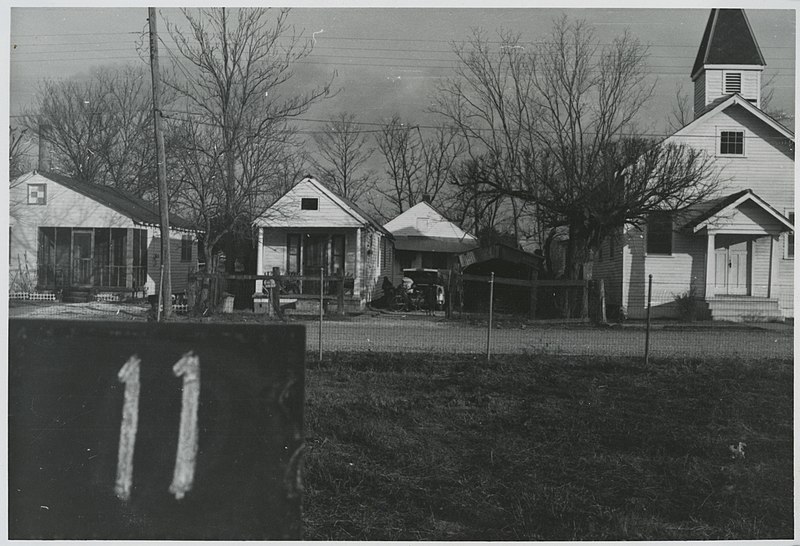
The shotgun house holds a distinguished place in architectural history, representing significant cultural heritage and offering a field of study for academic perspectives.
Cultural Heritage
The shotgun house is an integral part of African American heritage, especially prevalent in New Orleans and other parts of the southern United States. These structures serve as a tangible reflection of the cultural and historical narratives of the communities that developed and occupied them. Folklorists and cultural historians regard them as emblematic of African American influences that have shaped the fabric of American architecture.
Academic Perspectives
Renowned folklorist and architectural historian John Michael Vlach contributed significantly to the understanding of the shotgun house’s origins and dissemination across the United States. Architectural historians credit Vlach with advancing the study of these dwellings, emphasizing their importance in African American architectural legacy. His work demonstrates how the shotgun house’s design—characterized by its narrow and long form—is not merely a utilitarian response to urban lot sizes but also a meaningful architectural statement rooted in cultural practices.
Through scholarly investigation, the legacy of the shotgun house continues to be more thoroughly appreciated and understood in the context of its impact on American architectural heritage.


